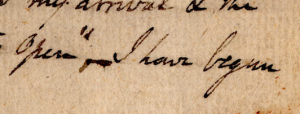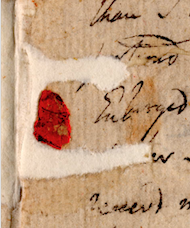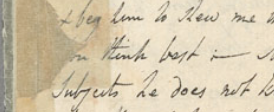While working for the Blake Archive over the summer, I found myself drawn into two different worlds, both based in language and presentation, beset with problems of transcription and clarity, and cohering around the sublime mind of William Blake.
First, I discovered that Blake’s poem “The Tyger” is delivered through the mouth of a serial killer in The Mentalist, a crime drama that aired from 2008-2015 when I found a used DVD boxset in Baltimore. In the final episode of the second season, the protagonist and crime-solving consultant Patrick Jane narrowly escapes his own murder at the hands of two thugs only to discover that the masked man who overtakes his abductors is none other than his nemesis, the serial killer Red John who murdered his wife and child. It turns out that Red John is a member of “the Blake Association” and William Blake asserts an ambient, somewhat haunting literary presence throughout the show.
As Red John circles around Jane in this episode, he leans so close to his face that the mystical dread coiled within Blake’s lines warps the viewer’s sense of both men—so full of hate and curiosity for each other—and, ultimately, of Blake himself. Red John whispers, “Tyger! Tyger! burning bright / In the forests of the night / What immortal hand or eye / Could frame thy fearful symmetry?”
Of course, these four lines are among the most published and anthologized in English. And, yet, they mystify me less than the plainer, more ritualistic, social and transactional language with which Blake composes his Westminster letters, which are forthcoming in the Archive. My sense of Blake moves from one of slightly terrified amusement at his pop culture invocation to one of curiosity for the human behind the immortal words. Popular entertainment often delivers pre-packaged interpretations, but the letters provide a network of daily experiences that provide context and information about the period beyond Blake’s work itself.
In transcribing and editing the XML for these letters, it is possible to become familiar with an opposite and symmetrical side of Blake—the planner, bill-payer, friend, bird-watcher, antagonizer—and still inquire into the narrative of experience that these letters provide. See the ending of his September 23, 1800 letter to Mr. Butts:

The various marks, additions, notes, scribbles, and ranges of care and attention to penmanship and presentation intrigue bear the everyday accidents of personal writing. See this simple example from the same letter:

However, the intimate surprises of his handwriting combined with physical damage to the letters present a challenge for people like me who are new to transcribing XML. At the University of Rochester, Debarati Roy and I entertained questions about the transcriptions of unclear text due to physical damage in the September 23, 1800 letter. Blake talks about the beauty of the country, his cottage in Felpham, and the hospitality of the locals. See this example in which the word “portiond” is only partially legible:


In trying to make the XML uniform with work previously published in the Archive, I went hunting for letters with similar instances of wear. The September 12, 1800 looks like this:

And the XML published in the Archive appears like so:

Here is a close-up of the beginning of the lines in question in the letter from September 23, 1800:

As you can see, the paper is torn and the words are unclear.
The XML draws on examples from the January 27, 1804 letter to William Hayley, which withstands similar damage:

The XML published in the Archive appears so:

Back to the letter in question:

The letters team is working on final edits, so the notes here need to be completed, but the XML draws on both examples above and essentially looks like this:

Working in XML often makes me feel clueless, but the logic of choice tags is starting to cohere. Transcribing Blake’s letters into XML at least, for me, reinforces the incidental nature of letter writing, the process of analyzing letters, circulating them, and then—hundreds of years later—trying to record the state of the letters themselves in a digital language. It seems, at times, like the practical, physical markers of Blake’s efforts are more sublime than whatever darkness inspired the glamorous romance of Blake on TV in the early 2000s.
